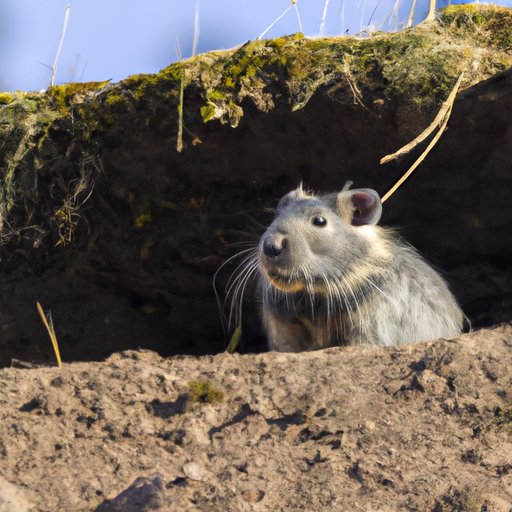Introduction
Have you ever heard of a lemming? These little creatures hold a very special place in folklore, both as a symbol of mass suicide and a creature of powerful significance. But beyond myths and legends, lemmings offer us a wealth of knowledge about animal behavior, the environment, and the impact that climate change can have on our planet. In this article, we’ll explore what a lemming really is, from its physical characteristics to its social behavior, as well as how it has influenced culture and the natural world.
A Scientific Explanation
A lemming is a small rodent that belongs to the family Cricetidae. There are several species of lemmings, which are found throughout the arctic tundra regions in Europe, Asia, and North America. These creatures are well-adapted for living in harsh environments, with dense fur and small bodies that minimize their exposure to the cold. They have small, rounded ears and short tails, and are known for their high-pitched, squeaking voices.
Lemmings are herbivores, and their diet consists mainly of grasses, mosses, and herbs. They are also known to feed on insects and small berries. During the summer months, they can reproduce quickly, with females producing several litters of up to ten young each. Their social behavior is complex and fascinating, with some species known to migrate in large groups across long distances.
Despite their small size and cute appearance, lemmings are important ecological indicators of environmental change. Their population fluctuations can reflect changing climate conditions and, in turn, have a significant impact on other predator species such as arctic foxes and weasels.
A Myth-Busting Article
Lemmings have long been associated with the myth of mass suicide, which dates back to the 16th century. According to the legend, lemmings are known to hurl themselves off cliffs or into the sea in large numbers, driven by some instinctual urge to self-destruct. However, this theory has been debunked, and it’s now widely accepted that lemmings do not commit suicide en masse.
So, why have these creatures become so closely associated with mass suicide? One possible explanation is that this myth was spread by early explorers, who observed their strange collective migrations and mistook them for suicidal behavior. Another theory is that this myth was perpetuated by Disney’s 1958 documentary, “White Wilderness,” which staged a fake lemming suicide scene by shoving the rodents off a cliff. Regardless of how the myth began, it’s important to remember that it is not based on scientific fact.
A Cultural History
Throughout history, lemmings have played a significant role in many cultures and societies. In Scandinavian folklore, lemmings are associated with the god of fertility and considered to be a symbol of abundance and growth. In Russian legend, the lemming is seen as a symbol of industriousness and hard work.
These rodents have also appeared in art, literature, and popular culture. For example, the lemming became a powerful symbol of resistance during World War II, with the Norwegian resistance movement wearing a lemming pin as a sign of solidarity. On a lighter note, lemmings have also become a popular video game, first released in 1991, in which players need to guide a group of the creatures to safety.
An Environmental Article
The impacts of climate change are becoming increasingly visible in the Arctic, and lemmings are no exception. In recent years, rising temperatures and melting permafrost have brought changes to their habitats and feeding patterns, leading to a decline in populations in some areas. This, in turn, can have a cascading effect on other predator and prey species in the arctic ecosystem.
It’s important that we take action to protect lemmings and their habitats. This includes reducing our carbon footprint, supporting conservation efforts, and advocating for stronger policies to protect the environment.
A Travelogue
If you’re interested in seeing lemmings up close, there are a few places you can visit in their natural habitat. One such place is Abisko National Park in Sweden. This park is located in the far north of the country, and is home to a rich variety of flora and fauna, including the Arctic fox, reindeer, and the elusive lemming.
When observing lemmings in the wild, it’s important to maintain a respectful distance and avoid disturbing their natural behavior. Binoculars and a good camera with a telephoto lens can help you get a good view without getting too close.
A Children’s Article
Have you met the lemming? This small, furry rodent is found in the cold northern regions of the world. Its long, fluffy tail and short ears help it to stay warm in even the coldest temperatures. Lemmings are herbivores, which means they eat only plants, such as grasses and small berries. They are always busy, collecting food and building nests in the earth or snow. Some lemmings even go on long journeys with their friends!
Did you know that the lemming was once famous for jumping off cliffs? This is just a silly myth, though – lemmings are too smart to do that! They may look similar to mice or rats that you might have seen before, but lemmings are actually a special type of rodent, with lots of interesting habits.
Conclusion
Lemmings may be small creatures, but they play a big role in the natural world and in human culture. Through a scientific lens, we can learn about their unique social behavior and adaptability to harsh environments. We can also separate fact from fiction about their supposed mass suicide tendency. As we explore their cultural significance, we can see how they have inspired art, literature, and folklore in different parts of the world. Finally, as we confront the challenges of environmental change, we can look to the lemming as a reminder of the impact that humans have on the planet, and the importance of taking action to protect other species.
